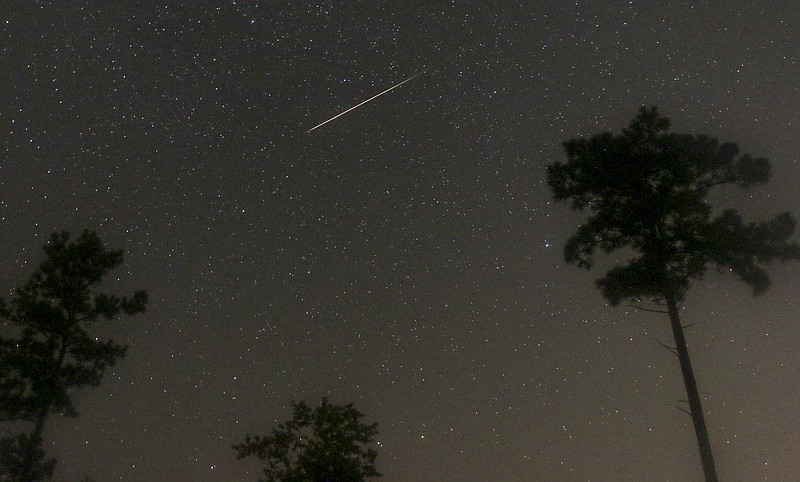If you see a shooting star on Friday the 13th, does the day cancel out the wish?
Superstitions aside, the bigger complication for wishing upon stars may be cloudy skies as the Perseid meteor shower reaches its peak.
The Perseid showers are among the strongest meteor showers of the year in the Northern Hemisphere and among the easiest for families to view. The celestial show starts in late July when kids are out of school and family schedules can better accommodate late night or early morning viewing. This year's Perseid activity should continue through Aug. 18, according to space.com, with peak nights Aug. 11-13.
Longtime skywatcher Bill Haley said it might be best to temper expectations as the "wildly optimistic predictions of 50 to 100 meteors per hour that you see on the internet" have not happened while he's been watching.
On clear nights leading up to the peak, Haley said, he has seen as few as two and as many as eight meteors in one night.
"Very few spectacular ones," he said. "Most were quite short and dim."
Clouds have been a hindrance on the expected peak nights, but he said he eventually saw nine early Thursday morning from his home in Soddy-Daisy.
"It was quite disappointing for me, as I've seen many more in prior years," he said.
Experts at NASA have estimated the number of Perseids that may be seen this year at about 40 per hour, but conditions have to be right, with absolutely no light pollution from Earth or the moon.
"These rates assume you are out in the country, where lots of stars and the Milky Way are visible and no clouds, of course," said Bill Cooke of NASA's Meteoroid Environments Office in a blog post at nasa.gov.
The Perseid meteor shower is created when Earth moves through the path of the comet Swift-Tuttle. Bits of comet debris, most no larger than a grain of sand, create streaks of light as they burn up in the Earth's atmosphere.
You need nothing but the naked eye and a dark, wide open sky to view the starry spectacle. Best viewing is from midnight to dawn. Space.com advises the meteors typically come in spurts so give yourself at least an hour of observing time.
Contact Lisa Denton at ldenton@timesfreepress.com or 423-757-6281.
